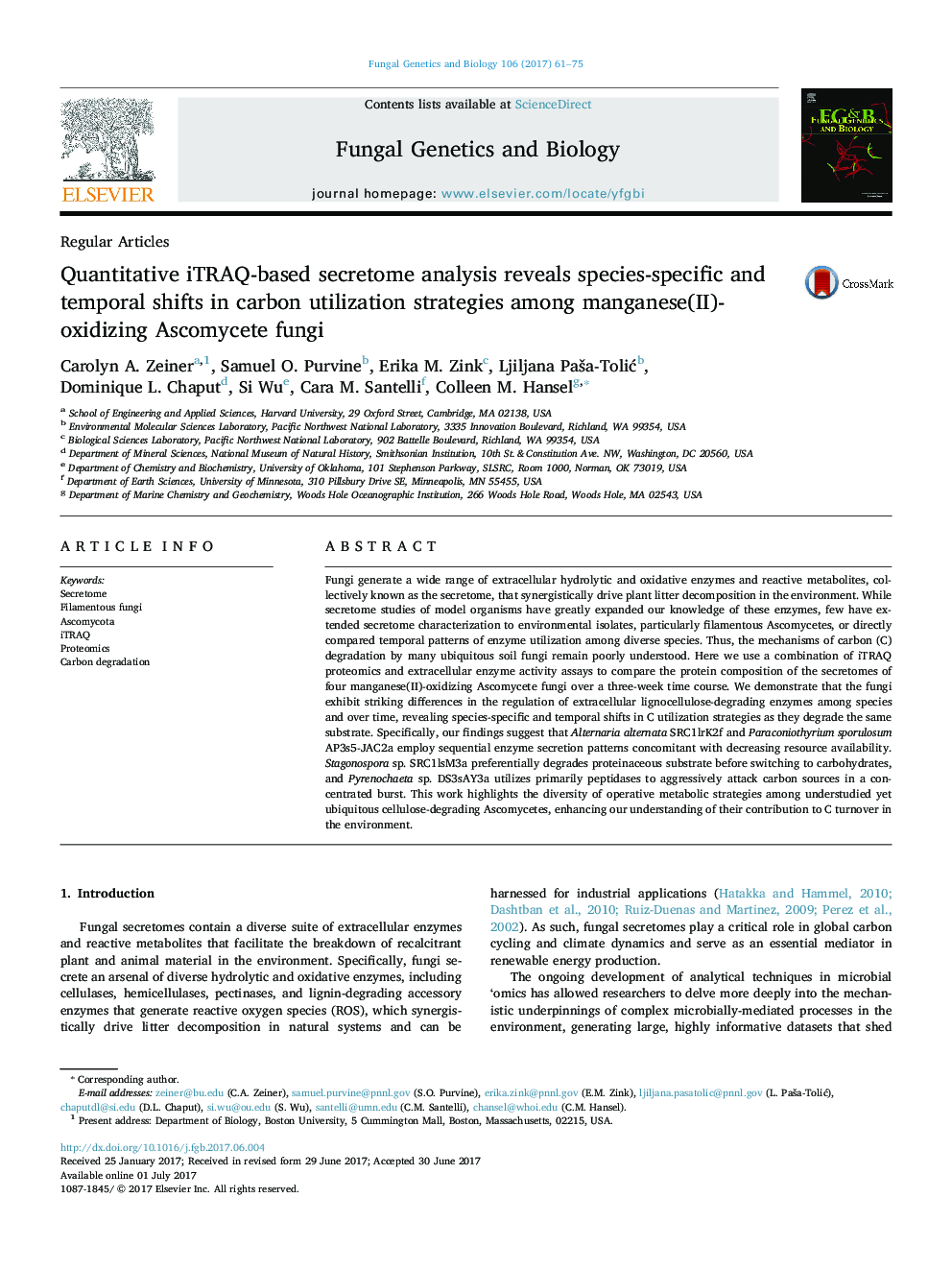| کد مقاله | کد نشریه | سال انتشار | مقاله انگلیسی | نسخه تمام متن |
|---|---|---|---|---|
| 5532730 | 1549985 | 2017 | 15 صفحه PDF | دانلود رایگان |

- We investigated the carbon utilization strategies of four filamentous Ascomycetes.
- These fungi are environmental isolates with cellulose-degrading capability.
- iTRAQ proteomics identified over 1200 proteins in the secretome of each species.
- Carbon utilization patterns varied with each species over a 21-day period.
- Extracellular enzyme activity assays supported major carbon utilization patterns.
Fungi generate a wide range of extracellular hydrolytic and oxidative enzymes and reactive metabolites, collectively known as the secretome, that synergistically drive plant litter decomposition in the environment. While secretome studies of model organisms have greatly expanded our knowledge of these enzymes, few have extended secretome characterization to environmental isolates, particularly filamentous Ascomycetes, or directly compared temporal patterns of enzyme utilization among diverse species. Thus, the mechanisms of carbon (C) degradation by many ubiquitous soil fungi remain poorly understood. Here we use a combination of iTRAQ proteomics and extracellular enzyme activity assays to compare the protein composition of the secretomes of four manganese(II)-oxidizing Ascomycete fungi over a three-week time course. We demonstrate that the fungi exhibit striking differences in the regulation of extracellular lignocellulose-degrading enzymes among species and over time, revealing species-specific and temporal shifts in C utilization strategies as they degrade the same substrate. Specifically, our findings suggest that Alternaria alternata SRC1lrK2f and Paraconiothyrium sporulosum AP3s5-JAC2a employ sequential enzyme secretion patterns concomitant with decreasing resource availability. Stagonospora sp. SRC1lsM3a preferentially degrades proteinaceous substrate before switching to carbohydrates, and Pyrenochaeta sp. DS3sAY3a utilizes primarily peptidases to aggressively attack carbon sources in a concentrated burst. This work highlights the diversity of operative metabolic strategies among understudied yet ubiquitous cellulose-degrading Ascomycetes, enhancing our understanding of their contribution to C turnover in the environment.
196
Journal: Fungal Genetics and Biology - Volume 106, September 2017, Pages 61-75